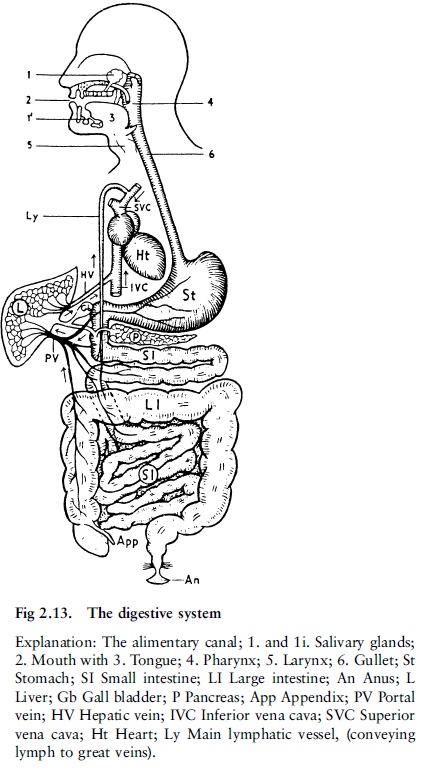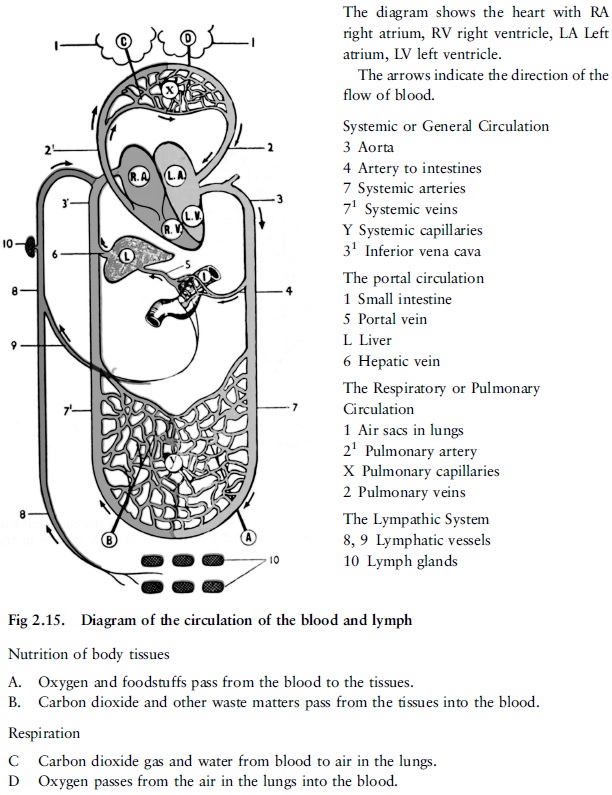Chapter: Forensic Medicine: Basic anatomy and physiology
Use of foods and oxygen in the body
Use of foods and oxygen in the body
The nutrients which have been prepared by
digestion are absorbed (ie taken up through the walls of the stomach and
intestines) and passed directly or indirectly into the blood. The small
intestine is the chief area where absorption of the nutrients take place.
Water, however, is largely absorbed in the large intestine.
There are two separate pathways by which the
various nutrients reach the general bloodstream of the body:
·
Nitrogenous nutrients together with sugars, salts and water are taken
into the blood mainly in the walls of the small intestine. They are then
carried by a large blood vessel, the portal vein (fig 2.13 PV), to the liver
and are to some extent acted upon by that organ before they reach the general
bloodstream of the body through the veins leaving the liver (fig 2.13 HV). This
special system is known as the portal circulation. In addition to other
important functions the liver has to store the sugars and prepare them for
further use in the body. Any substances (including poisons) absorbed from the
gut must thus pass via the bloodstream to the liver, where they could (as in
the case of poisons) damage the liver, or be modified by it.

·
Fats, on the other hand, are taken up by the lymphatic vessels of the
small intestine and pass through these to veins and so to the general
circulation (fig 2.15).
Both pathways of absorption are shown in fig
2.15. A further description of the portal circulation and of the lymphatic
vessels will be found in the next section.

The body is a living ``machine'' and its living
structures or tissues make use of the nutritional substances and oxygen in
order to:
·
perform mechanical and other forms of labour
·
maintain bodily heat
·
repair the constant decline of living structures
In a steam engine coal and oxygen from the air
are used similarly to produce heat, which in turn result in useful activity. In
the body there is less active ``burning'' or oxidation of nutritional
substances which are absorbed in the lungs and blood. In both cases energy is
produced in the form of heat, resulting in activity. The burning of coal in the
engine converts the coal into smoke and ash. So too the activity of bodily
tissues in consequence of oxidation and the conversion of food produce certain
waste material of which the body must rid itself.
The most important of these waste materials are:
·
carbon dioxide
·
water
·
urea
Related Topics